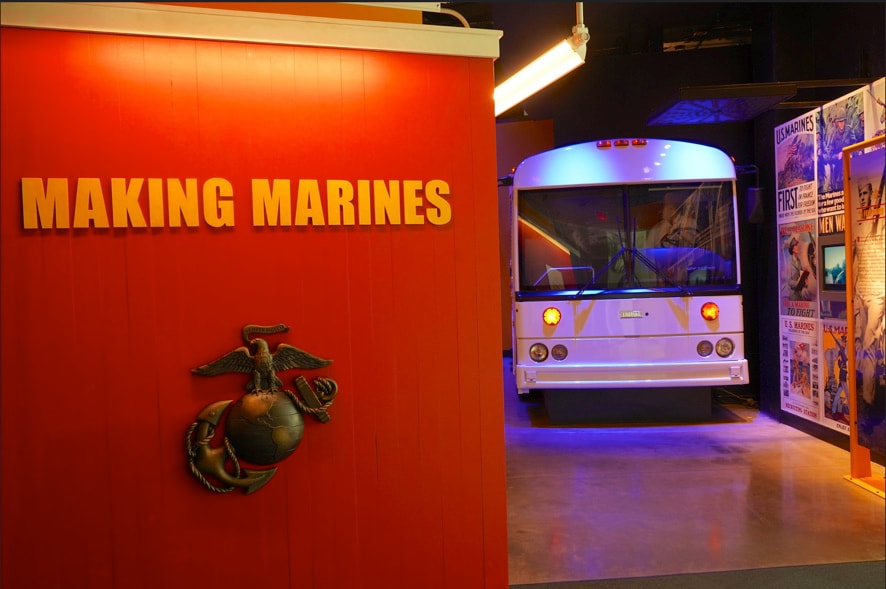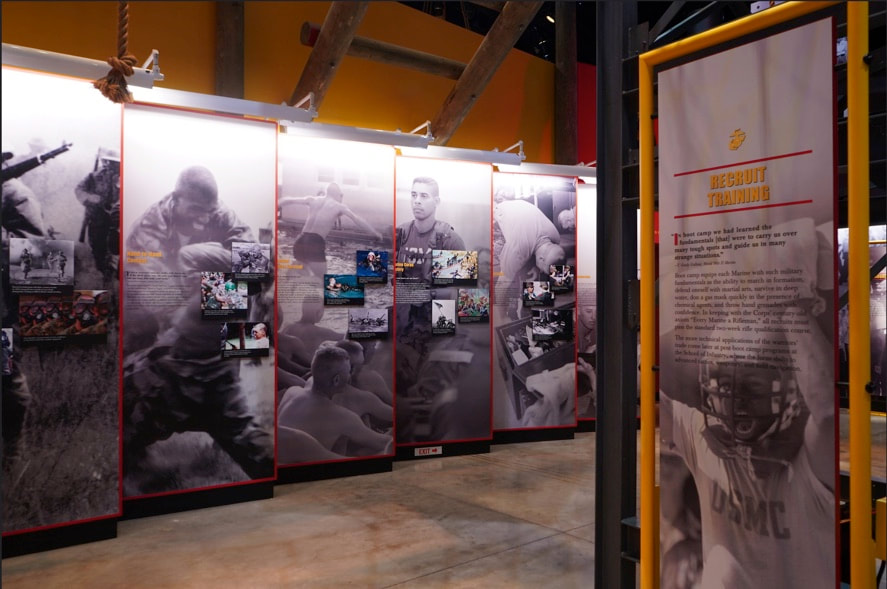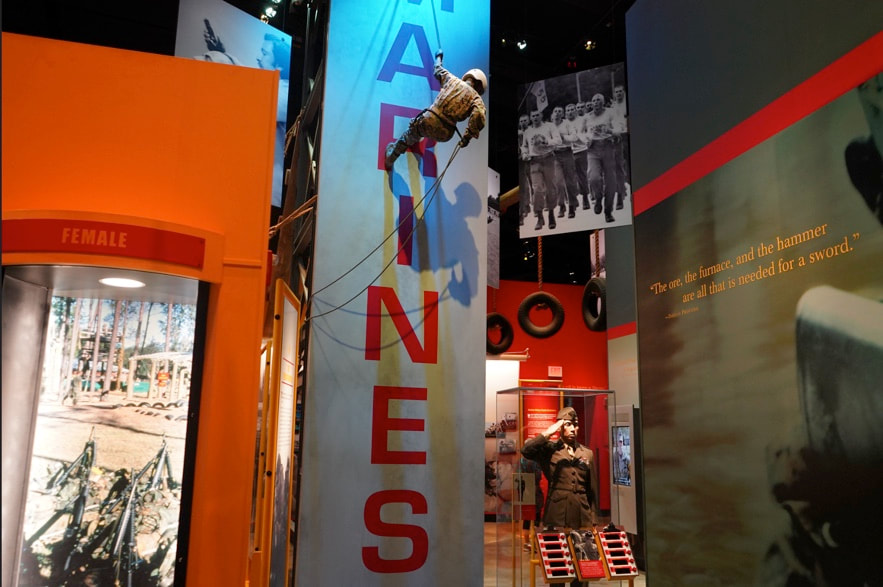Making Marines
All Marines remember their drill instructor. The Making Marines gallery allows visitors to step inside the process used by drill instructors to transform young men and women into Marines. Making Marines immerses visitors in the memorable experiences that forge recruits into privates and officer candidates into lieutenants: listening to the thoughts of wary recruits during that first bus ride to the training depot, standing on the famous yellow footprints, and visiting the barbershop where “it all gets taken away.”
Visitors also get up close and personal with their own drill instructor and experience the most important lesson of boot camp: learning to solve problems as a cohesive unit, rather than as an individual.
Before you leave the gallery, try your marksmanship skills at the M-16 laser rifle range! Remember: “Every Marine is a rifleman.”
Visitors also get up close and personal with their own drill instructor and experience the most important lesson of boot camp: learning to solve problems as a cohesive unit, rather than as an individual.
Before you leave the gallery, try your marksmanship skills at the M-16 laser rifle range! Remember: “Every Marine is a rifleman.”
Every Marine is a Rifleman
We are always happy to hear from you Get in touch
THE MUSEUM IS OPEN! PLAN YOUR VISIT HERE.
National Museum of the Marine Corps
1775 Semper Fidelis Way Triangle, VA 22172 Toll Free: 1.877.653.1775 |
VISIT
RESEARCH |
LINKS
|
JOIN US ONLINE!
|
©
Copyright 2021. Admission to the National Museum of the Marine Corps is FREE. Hours are 9:00 AM to 5:00 PM every day except Christmas Day.











